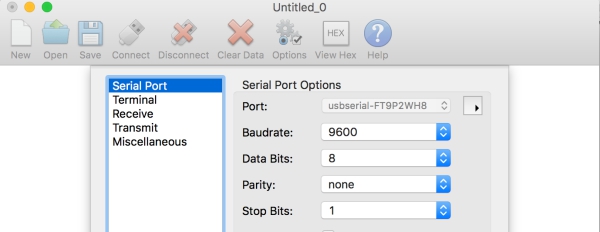
This problem can be solved by adding an RS-232 TTL converter, but then you have to make sure that you really have RS-232. the Arduino works with voltage between 0 and 3.3 or 5 V (you can choose) and 12V makes a toast of my Arduino and the UART is TTL based. I have always used it like this in the network and it has always worked like this without any problems. Voltages range between + 12V and -12V for reps. This looks suspiciously like the RS-232 wiring as used in NMEA0183 in the past. May 6, 2020: The PCB solder buddy and RS-422/485 to TTL converter have been deliveredįrom the old Robertson Databox there are 5 wires available for communication Red (+ 12V) Brown (Rx), White (Tx), Green (Gnd) and Black (-0V). Since I've a strong OO-background and the Arduino is merely sequential or loop based I'm looking into a project from Kevin Gagnon (based on a project from Alan Burlison ) to implement an event driven architecture as much as possible into this project.Ĭurrently I'm waiting for all the ordered items to arrive ETA is end of May.Īs per Apr 30st, 2020 the pin headers and the 9 DoF thingy have been delivered.soldering tin has been delivered The replacement of the current multiplexer by the Arduino is a Would or Wish to have for now.

Integrating the 9 DoF thingy is a Should have and adding the TFT display features is a Could have. Manipulating the original NMEA0183 v1.5 data stream is must a have. the hard way: sell the YDWR02 and do all the multiplexing via the Arduino and add WiFi capabilities to it so it can act as a client in my boat network.Įither way I'll follow the MoSCoW principle Must, Should, Could and Would haves.Or even trend data for the average speed and wind etc.

Meaning several grouped pages with related data and a datalogger for the NMEA data. And create some nice gauges to show on the TFT display. Extend the data with the data coming from the MPU 9250 unit and pass it through to the multiplexer ( adding the AIS data) which sends it via WiFi to the iPad. Filter the data that I 'm interested in, add a checksum if necessary (GPS and AIS data contain a checksum). the easy way out: read the NMEA0183 data stream from the Robertson Databox into the Arduino.Never soldered a pin on a PCB before and yet there are a lot of them waiting to be soldered like a pro. The Arduino multiplexer project on King Tide Sailing triggered me and here I am. Since I don't have a sensor or valid data available telling the magnetic or true heading I decided to integrate an MPU-9250 - GY9250 unit a 9 DOF thingy with a digital compass, accelerometer and gyroscope.Īll this also gives me the opportunity to design a user interface for all the incoming data like a Multi Function Display.

Fortunately there is a workaround and I can use the equipment, but without the old data stream resulting in only GPS and AIS info ( or all data with a frozen HDG at 2 degrees North) Since this is a given fact, I need to work on the other end of the wire and manipulate the old NMEA0183 data before it is send to the iPad. Multiplexing the the 2 data steams results in a frozen HDG at 2 degrees in the navigation app on the iPad. Unfortunately with this option activated the data can not be filtered out and that is where the problem, well the inconvenience, started. It even offers the option to pass through the old V1.5 NMEA0183 data. I initially went for the easy way out and burned some Euro's on a commercial multiplexer, which is a great product from YachtDevices the YDWR02 (4 NMEA inputs and 4 NMEA outputs).


 0 kommentar(er)
0 kommentar(er)
